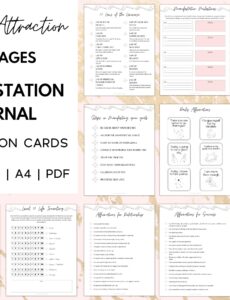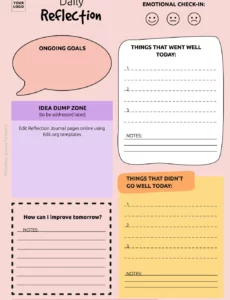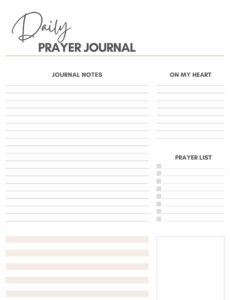We all know how crucial a good night’s sleep is for our overall well-being. It impacts everything from our mood and energy levels to our focus and physical health. Yet, for many of us, consistent, restorative sleep feels like an elusive dream. We might toss and turn, wake up feeling groggy, or simply not understand why some nights are better than others.
This is where the magic of tracking comes in. While there are countless apps and gadgets designed to monitor your sleep, sometimes the most effective tools are the simplest and most personal. Imagine a dedicated space where you can not only record your sleep patterns but also reflect on them, identify trends, and make conscious changes. That’s precisely what a sleep tracker bullet journal template offers – a beautiful, customizable, and deeply insightful way to reclaim your nights.
Why Track Your Sleep in a Bullet Journal?
Diving into the world of sleep tracking can feel overwhelming with all the tech options available. However, a bullet journal provides a unique and powerful alternative. It’s not just about numbers on a screen; it’s about a mindful engagement with your sleep patterns, allowing for a deeper understanding that apps sometimes miss. You’re not just passively collecting data; you’re actively participating in the analysis and reflection, which often leads to more sustainable changes.
The beauty of using a bullet journal lies in its inherent flexibility. Unlike rigid apps, you have complete freedom to design a layout that perfectly suits your needs and aesthetic preferences. This personalization encourages consistency, turning what could be a chore into an enjoyable part of your daily routine. You decide what information is most relevant to you, making the tracking process truly tailored to your personal sleep journey.
The Power of Personalization
When you create your own sleep tracker bullet journal template, you’re not limited to predefined metrics. You can choose to track anything and everything that might influence your sleep or be affected by it. This could include the basics like sleep duration and bedtime, but also delve into more qualitative aspects that no gadget can truly capture.
- Sleep Duration: Time you went to bed, time you woke up, total hours slept.
- Sleep Quality: A simple rating (1-5), or descriptors like “restless,” “deep,” “interrupted.”
- Mood Upon Waking: How you feel starting your day.
- Energy Levels: A scale to gauge your vitality throughout the day.
- Factors Affecting Sleep: Caffeine intake, exercise, screen time before bed, stress levels, meal times, medication.
- Dreams: A space to jot down any memorable dreams, which can sometimes provide insights into your subconscious.
Beyond the Numbers
While numerical data is helpful, a bullet journal excels at capturing the narrative behind your sleep. You have ample space for notes, observations, and reflections. Did you have a particularly vivid dream? Did a stressful event during the day lead to a restless night? How did that late-night snack really impact your sleep quality? These qualitative insights are invaluable for understanding the holistic picture of your sleep health. This detailed logging allows you to connect the dots between your daily activities and your nighttime rest, empowering you to identify triggers and effective strategies for improvement.
Crafting Your Perfect Sleep Tracker Bullet Journal Template
Designing your own sleep tracker bullet journal template doesn’t have to be complicated. You can start with something incredibly simple and gradually add more elements as you discover what works best for you. The goal is to create a system that is easy to maintain and provides meaningful insights, not one that adds another layer of stress to your life. Remember, this is your personal tool, so there’s no right or wrong way to do it.
A good starting point for your template involves creating a monthly or weekly spread. Many people opt for a simple grid system where each day has a dedicated space. You can use color-coding to visualize different aspects, such as sleep quality, mood, or even the type of activity you engaged in before bed. This visual representation can quickly highlight patterns that might otherwise go unnoticed when looking at raw data.
Here are some popular elements to consider including in your layout:
- Monthly Grid: A calendar-style layout where each day is a box for quick entries.
- Daily Log: A more detailed entry space for specific nights.
- Color-Coding Key: Assign colors to different sleep qualities (e.g., dark blue for deep sleep, light blue for restless).
- Sleep Cycle Chart: A visual representation of your sleep and wake times over a 24-hour period.
- Notes Section: An open area for qualitative observations and reflections.
- Habit Trackers: Mini trackers for pre-sleep routines (e.g., reading, meditation, no screens).
As you become more comfortable with basic tracking, you might want to experiment with correlating your sleep with other lifestyle factors. For instance, you could add columns or sections for exercise intensity, diet choices, or even specific stress triggers to see how they impact your sleep. Some users also enjoy creating mini bar graphs or line charts within their bullet journal to visually track trends in sleep duration or quality over time, making it easy to spot improvements or dips.
The most effective sleep tracker bullet journal template is one that you consistently use and adapt over time. Don’s be afraid to tweak your design, add new tracking points, or remove those that aren’t proving useful. This iterative process ensures that your journal remains a dynamic and valuable tool in your quest for better sleep. Embrace the journey of discovery, and you’ll find yourself not only sleeping better but also gaining a deeper appreciation for your body’s natural rhythms.
Embracing the habit of tracking your sleep offers profound benefits beyond just counting hours. It cultivates a heightened awareness of your body’s signals and the daily choices that influence your rest. This intentional engagement transforms a passive experience into an active journey towards better health and greater self-understanding.
By taking the time to observe and reflect, you empower yourself to make informed decisions that support truly restorative sleep. Your personalized journal becomes a powerful ally, guiding you towards more peaceful nights and more energized days, ultimately enhancing your quality of life in countless ways.





